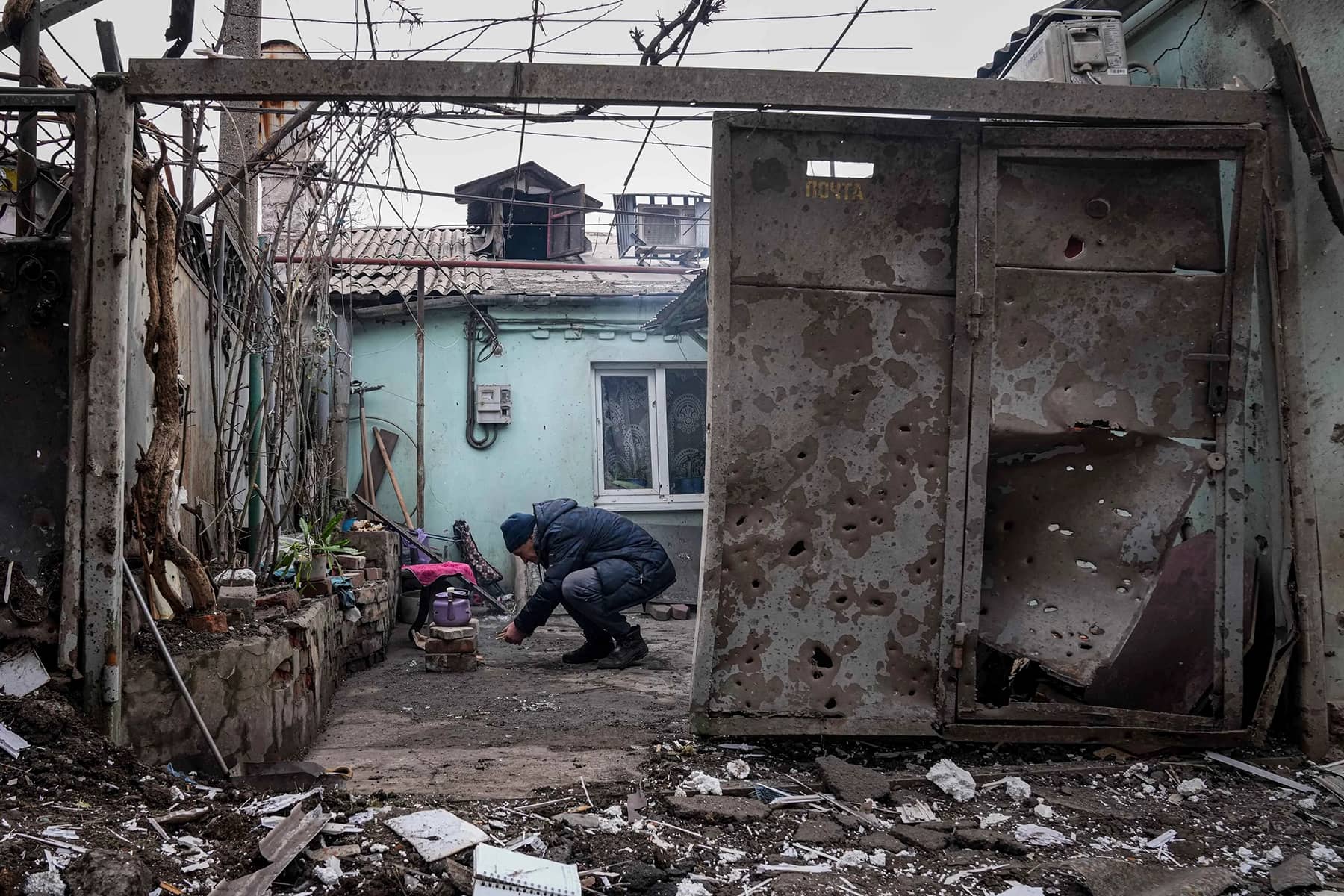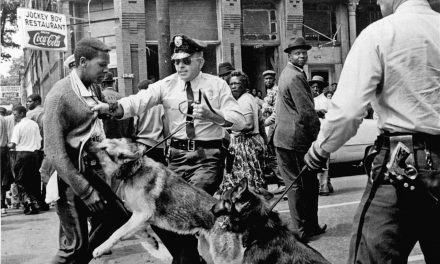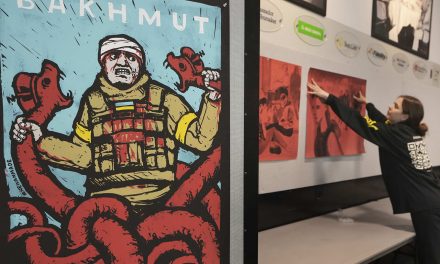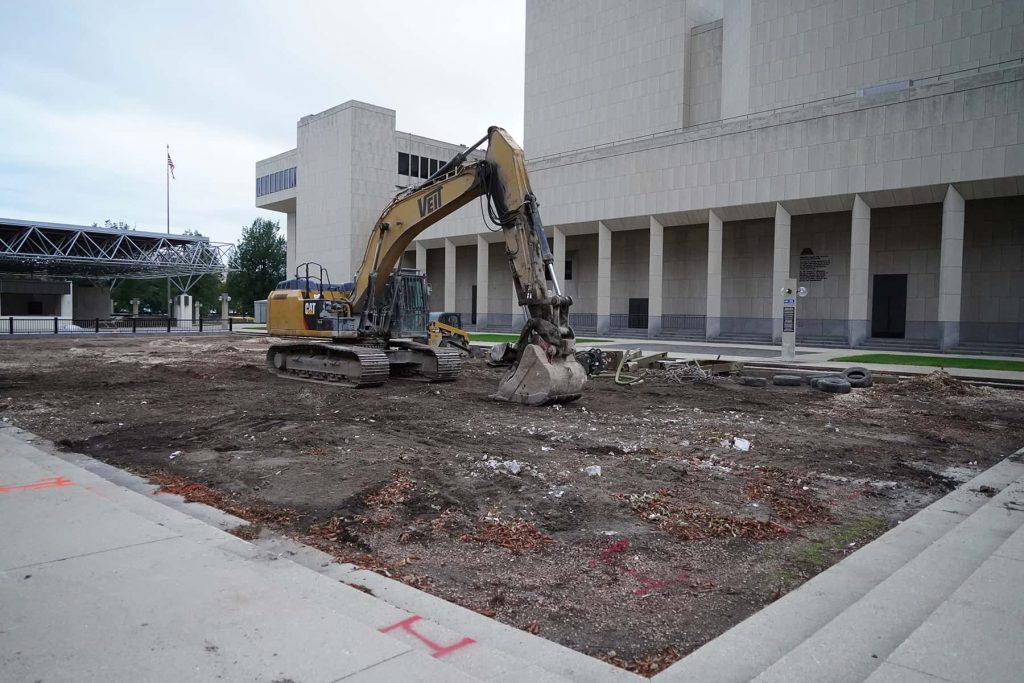
As I write these lines in Kyiv, my window panes are shaking to the booms of air defense guns intercepting Russian aircraft over the city. On March 7, the Ukrainian military reported two airplanes had been downed.
What happened to the city still feels like an old movie. Two weeks ago our streets were buzzing with joy, cafes and shops were full, street singers were singing and young people were dancing outside the Khreshchatyk subway station. Now it is a ghost city, a mix of London during the blitz and something from futuristic post-apocalyptic fiction.
Most of the population fled after the first days of the invasion. Those who decided to stay wake up in the night to the sound of air-raid sirens. Bomb shelters and basements, the legacy of the cold war, have been unsealed in many residential blocks. Lots of people spend their nights at subway stations underground, sleeping in their improvised tents or sleeping bags on the floor. And at the central railway station, immense crowds are fighting for a chance to take a train to safe west Ukraine.
Traffic has almost completely gone. Getting a full tank of fuel is a big issue. The city streets are full of roadblocks, checkpoints and anti-tank hedgehogs. People spend hours, sometimes days, queueing up to get food and medicine at the few supermarkets and pharmacies that still work.
Russian missile strikes in Kyiv and beyond are regular news. Incoming artillery rounds suddenly breaking the silence in the night is not a surprise any more. We just accept this as the new normal. It is happening to us, and to cities such as Kharkiv and others.
Fully fledged tank combat and artillery duels rage on just north-west of Kyiv. Two weeks ago, the satellite towns of Irpin, Bucha and Hostomel were among the most rapidly developing and comfortable parts of the Kyiv metropolitan area, a sort of local Beverly Hills. Today, with the Russian military trying to establish a foothold there, those cities look like the hellscape of Stalingrad. The Ukrainian military is fighting until the bitter end to prevent Russians from advancing to surround the capital, with all bridges in the city suburbs destroyed.
It can be depressing. The worst is the death-like, uncomfortable stillness that comes with the curfew at 8pm. There are no lights in the windows. You don’t want to turn music on, or watch a movie, or open a book – it’s as if the silence has a chokehold on us.
My flatmate, a close friend since my university years, does nothing but sit in the dark and stare at his smartphone. He hopes to catch the smallest piece of news about his family in the city of Mariupol, which is now being besieged and relentlessly shelled by the Russian military. It sometimes seems as if even nature joins the mourning mood. In contrast to the beautiful and warm prewar days, I haven’t seen the sun shining in Kyiv since Putin unleashed this insanity.
But if you take a closer look, there is still much good. In times of grief and hardship, people show incredible solidarity. During long nights at subway stations, people throw underground picnics. Many buy necessities in supermarkets with their own money and drive to the worst hotspots of war at their own risk – just to bring food, water and medicine to those suffering, and possibly help evacuate people who want to leave.
In the military, there are war zone weddings, with soldiers proposing to their girlfriends at the barricades. And many people have provided a safe haven for those fleeing the hostilities, often packing two or three families in a single-family house
Incredibly, a reported 100,000 men and women joined the Territorial Defense Force, a nationwide home guard organisation running missions for the regular military behind the lines. In Kyiv, the force has so many more willing candidates that many local branches turn people away for lack of available firearms.
On the internet, the war has given birth to multitudes of the craziest urban legends and yarns – from the Ghost of Kyiv, a mythical top-notch flying ace, to Roma taking out Russian tanks, or the story of an unidentified old woman downing a Russian drone with a cucumber jar.
The national unity is near-total. A recent poll said 93% of Ukrainians fully support president Volodymyr Zelenskiy’s leadership and his wartime effort. He is now praised by many who openly despised him just two weeks ago. In many locations, unarmed civilian crowds stood in the way of Russian armoured convoys.
The same poll suggested that as many as 88% of Ukrainians believed their country would successfully repel the Russian invasion. Just like so many times in human history, there’s always hope in the dark.
Іllіа Pоnоmarеnkо
Еvgеnіy Mаlоlеtkа
Originally published as Kyiv’s suburbs now look like the hellscape of Stalingrad – but we still have hope
Help maintain a reliable news source in Ukraine by supporting the Kyiv Independent, an English-language media outlet created by journalists who were fired from the Kyiv Post for defending editorial independence. Donations can be made via patreon or gofundme.














